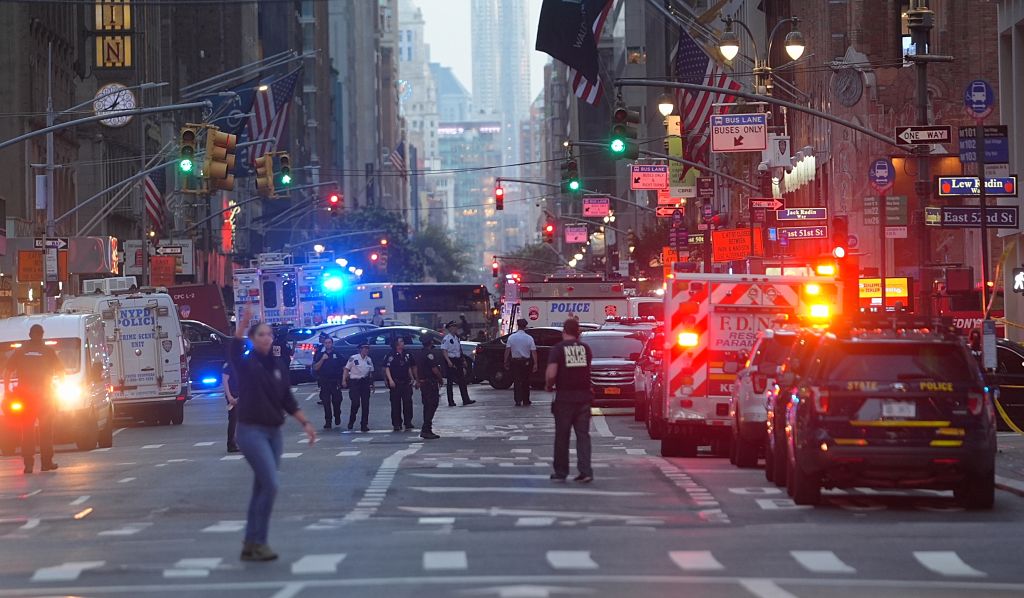Off The Radar, Rich In History: Exploring Black Indianapolis

As a Midwestern transplant (currently) living in Houston, I’ll admit that I am biased about the region. I defend my answer of “yes” endlessly when people ask if exploring Black culture in the Midwest is worth it outside of Chicago.
A recent trip to Indianapolis backs up my argument. The “Great Migration” of Black people from the South was smaller when compared to its big sister cities, Chicago and Detroit, so the contributions and the city’s significance to Black history are often overlooked.
Please make no mistake about it; Black history in Indianapolis is rich and layered. It’s why I will continue to shout from the region’s cornfields and rolling hills that, while off the radar, it’s worth visiting. Here’s why.
The Early Roots Of The Black Community In Indianapolis
The Great Migration of Black people was one of the most significant movements of people in the United States’ history. Approximately six million Black people moved from the South to the Northern, Midwestern, and Western states from the 1910s until the 1970s. Escaping racial violence was the driving force behind escaping, along with economic and educational opportunities.
According to the Indiana Minority Business Magazine, the 1820 census recorded 1,230 Black people in Indiana, with at least 50 residing in 10 Indiana counties. An estimated 498 lived in Indianapolis by 1869. By 1950, Indianapolis alone had a Black population of 30,796. For perspective, by 1950, there were over 362,096 Black residents in Chicago.
Like many cities, the segregation patterns in Indianapolis were shaped by historical discriminatory practices such as redlining and race-based lending. Black neighborhoods were concentrated on the city’s west and northwest sides. Indianapolis’s first and oldest neighborhood is Ransom Place.
Founded in 1897 and named after the prominent attorney Freeman B. Ransom, the neighborhood attracted many Black professionals, including doctors, lawyers, and civic leaders. Other Black communities include Keystone-Monon, Mapleton-Fall Creek, Riverside, Haughville, and Midtown, which was once a vibrant area with its very own “Black Wall Street” on Indiana Avenue.
Many of these neighborhoods were displaced because of urban renewal projects in the 1960s.
Indiana Avenue: The Soul Of Black Indianapolis
Indiana Avenue was once considered Indianapolis’s “Black Wall Street” and “The Harlem of Indy.” It was the hub for Black art, businesses, culture, music, and nightlife in the late 19th and early 20th centuries.
The area was undeveloped because city leaders at the time considered it swampy and unhealthy because of its location near the Central Canal and White River. African Americans settled in the area in the 1860s, following the end of the Civil War. According to Discover Indiana History, Indiana Avenue was attractive for Black residents, in part, because of the area’s geographic isolation.
Segregation and negative attitudes towards African Americans are why residents on Indiana Avenue had to become self-sufficient. Black residents provided goods and services to each other because stores in different neighborhoods wouldn’t allow them to shop.
Between 1920 and 1975, the Indianapolis Recorder, the third-oldest Black newspaper in the country, was located on the 500 block of Indiana Avenue. At its peak in the 1920s, Indiana Avenue featured over 33 jazz clubs that hosted musicians such as Nat King Cole, Duke Ellington, and Ella Fitzgerald.
Bethel A.M.E., the oldest African American congregation, was founded in 1836. In 1910, one of Indianapolis’s most famous residents, Madam C.J. Walker, relocated her hair business to the Avenue.
Walker raised funds to build the Black branch of the YMCA on Senate Avenue. She developed the Walker Building — a four-story, multi-use building that housed her world headquarters, Madame C.J. Walker Manufacturing Company, a beauty school, ballroom, drugstore, coffee shop, and movie theater. The theater still stands today.

Where To Explore Black History And Culture In Indianapolis Today
Madam Walker Theater Tour
The historic Walker building, located off Indiana Ave, was the center of Black businesses, art, and music in the early 20th century. The building was once the headquarters and manufacturing plant of Madam CJ Walker Hair Care and Beauty Products. You can take a tour of the theater today, which contains much of its original 1927 architecture. Now, the building honors Walker’s legacy through educational programming, shows, and more.
Attend BUTTER Fine Art Fair
Held every year during Labor Day Weekend, BUTTER Fine Art Fair is the Midwest’s largest Black fine art fair. It’s a weekend that spotlights Black artists and redefines how the art world engages with Black visual artists.
Belmont Beach Tour
Once a segregated swimming spot for Black families in the 1920s, Belmont Beach has undergone a transformation to reshape its history. After years of water pollution, Belmont Beach is now a vibrant, inclusive gathering place for people of all backgrounds and ages. You can learn more about tours and year-round programming through the Friends of Belmont Beach organization.
Slippery Noodle
While not Black owned, Slippery Noodle is the oldest bar in Indiana. Each week, guests can enjoy live music from local bands. The bar is significant to Black history because it was a stop on the Underground Railroad, according to Visit Indy.
The post Off The Radar, Rich In History: Exploring Black Indianapolis appeared first on Travel Noire.
What's Your Reaction?
 Like
0
Like
0
 Dislike
0
Dislike
0
 Love
0
Love
0
 Funny
0
Funny
0
 Angry
0
Angry
0
 Sad
0
Sad
0
 Wow
0
Wow
0



























